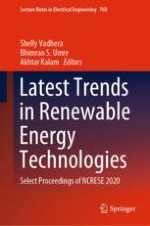2021 | OriginalPaper | Chapter
Proposed Framework for Sustainable Village Strategy in the Semi-Arid Region of Maharashtra, India
Authors : Hemraj R. Kumavat, Rohan V. Kumavat, Hemal V. Bhangale
Published in: Latest Trends in Renewable Energy Technologies
Publisher: Springer Singapore
Activate our intelligent search to find suitable subject content or patents.
Select sections of text to find matching patents with Artificial Intelligence. powered by
Select sections of text to find additional relevant content using AI-assisted search. powered by
